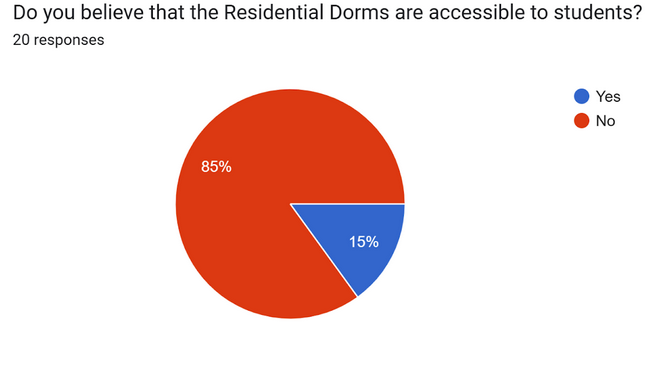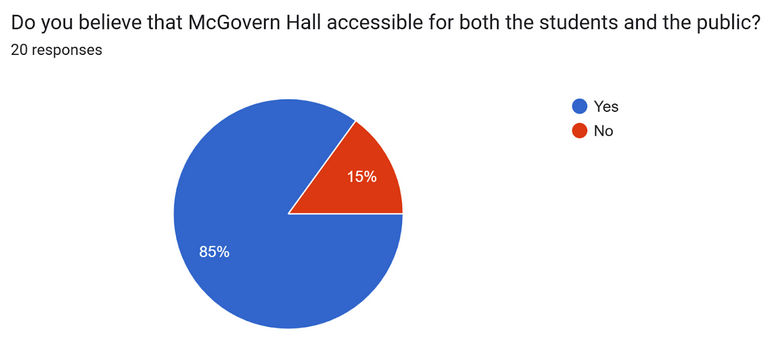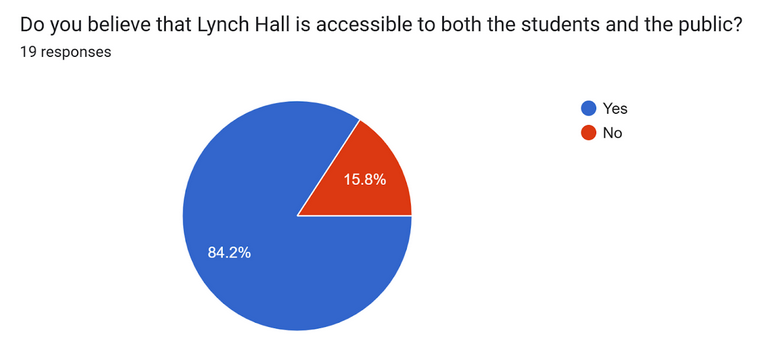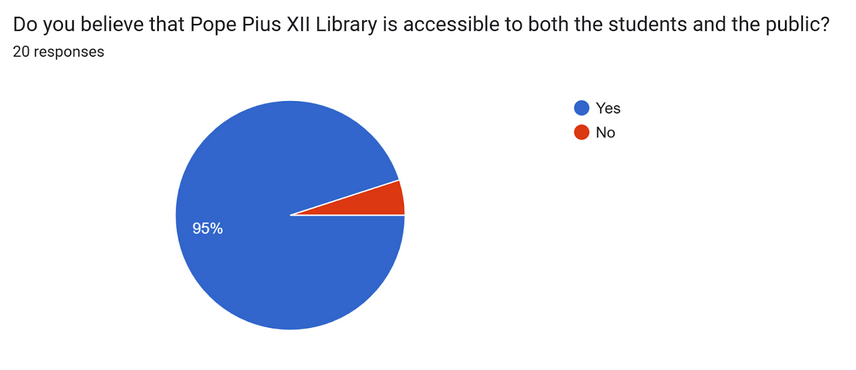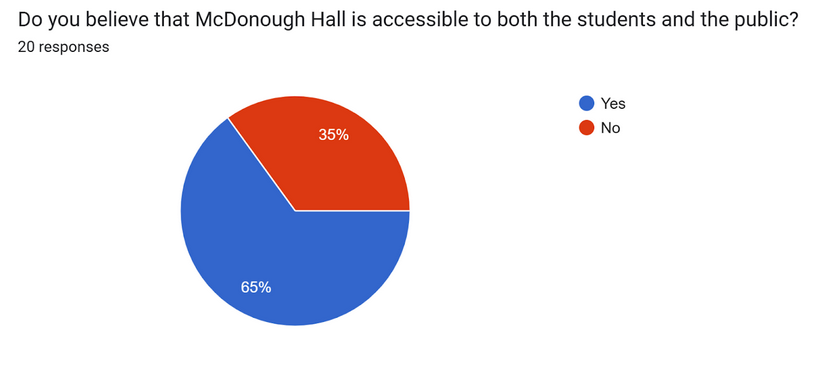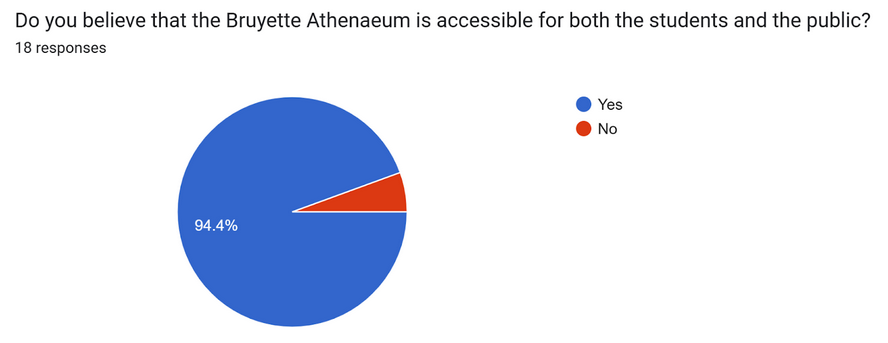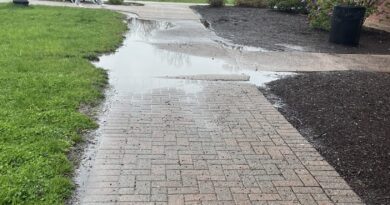The Accessibility of USJ’s Campus
Written by Nova Brown
An accessible campus should be more than just a legal requirement; it’s a commitment to create a community of inclusivity and equity. An accessible campus requires that all front and back entrances, facilities, pathways, and living accommodations are accessible to everyone, including those with mobility impairments. On this campus, elevated or stair-based entrances with no ramps, the absence of elevators, and poorly designed pathways are common scenery. All of these create accessibility challenges on campus. While a majority of the students surveyed said that USJ is an accessible campus, there are specific buildings on this campus that students overwhelmingly said are discriminatory inaccessible. 85% of students surveyed said that the dormitories on campus are inaccessible. Some students shared their concerns via an online survey saying “No dorm has ramps at entrances, and even if ramps exist outside, stairs are required to reach every floor except the first floor of Madonna, which isn’t feasible for wheelchair users,” and how “The lack of elevators makes navigating dorms nearly impossible for those with mobility issues or temporary injuries.” These comments from anonymous students themselves highlight a significant gap between the campus’s mission of inclusivity and the lived experiences of students.
To continue, a large part of students surveyed said that McGovern Hall is usually accessible. However, students have spoken out about the displeasure of how the handicap push plates work inconsistently. This has been a common issue for the majority of students who go to the cafeteria, to study in the lounge, along with anyone who is interested in the wellness center and CAPS. In a hypothetical situation where a student is physically unable to open the front door, they would reach for the push plates. However, in this situation, the push buttons don’t work. What should this student do? Should they wait for someone to help them? Or rather, should the push buttons not operate irregularly?
Hearing from students via an anonymous survey is important, however, having a student who is brave enough to share their voice on this issue is just as important and valued. I was able to interview a first year student-athlete who lives on campus. Eileen Whittel plays field hockey along with being a social work major.
Nova: Hi! Thank you so much for reaching out to me for an interview, should I get started?
Eileen: Yea!
Nova: If you feel comfortable, could you share a bit about your injury?
Eileen: Sure. I have a double knee injury
Nova: Do you think that athletes on campus get injured often?
Eileen: Yes, I do. Speaking for and observing my team, I’d say about 35% of us have been injured, either on the field or from running and other activities.
Nova: Outside of the physical therapy services offered, do you believe you can comfortably and safely move in and out of each building on campus?
Eileen: Most buildings are manageable for me right now, but the dorm buildings are a big issue. I’m supposed to limit going up and down stairs, but my dorm is on the third floor. That makes it very difficult…it was incredibly hard to get to my room because the dorm doesn’t have an elevator.
Nova: Do you think you can comfortably move from class to class without worsening your injury?
Eileen: For the most part, yes. All the other buildings have elevators, which makes it easier for me to get around.
Nova: In your opinion, what building on campus is the most physically accessible?
Eileen: That would be McGovern Hall. It has elevators to access the second floor and no stairs at the entrances, which makes it much easier to navigate.
Nova: And what building would you say is the least accessible?
Eileen: Definitely the dorm buildings. None of them have elevators, and in McAuley, there aren’t even dorms on the first floor. It’s really challenging for anyone with a mobility impairment to live there.
Nova: Well, that’s all of my questions, do you have anything to say about this?
Eileen: Not really, thank you!
This student highlighted how the current infrastructure on campus fails to meet the needs of students with mobility issues, whether that be temporary or permanent. Even though, legally, our campus here at USJ meets the legal requirements to be an accessible campus, the student opinion tells us otherwise. Accessibility is not just a legal obligation, but an ethical imperative. The inability for students to navigate their own living space without difficulties is unacceptable, especially on a campus that promotes inclusion.
First, we should acknowledge that there are some accessible buildings on this campus; Pope Pius Library, the Bruyette Athenaeum, and Lynch Hall were praised for their fully accessible main entrances, electronically operated doors, and elevators. One of the most controversial buildings besides the dorms was McDonough Hall, where most classes are held. 65% of students surveyed deemed it accessible. However, concerns were raised about the back entrance being the only accessible entry point, which is located along uneven pathways.
One potential solution would be adding ramps, or widening doorways without complete reconstruction of the dorm buildings. Installing elevators, however, may be more difficult, as our dormitories have older foundations. However, we must consider the financial “punishment” of renovating the dormitories for the accessible option of elevators would outweigh how the current inaccessibility of our campus affects students’ daily lives. While the upfront costs of renovations may seem steep, these investments can and would yield financial benefits. A more accessible campus would promote more student applications and admission; this would allow the university to increase its revenue in the long term.
To continue, we have seen a trend in over-admitting students, specifically residential students. This year, we have had to create rooms that were traditionally occupied by two students, into rooms that hold three students. This cramped space has unintentionally brought stress to the student body. A perfect solution would be to renovate our current dorms or create new off-campus housing. By redistributing the tuition we all pay for, we can create this accessible reality. With this idea, we are not only aiding students with mobility issues but we are also accommodating the increasing trend of over admitting students.

